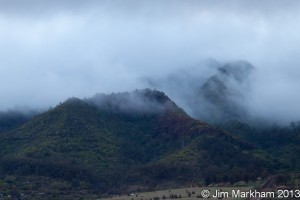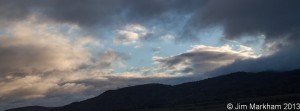
So for Christmas, I got (surprise, surprise) some books, and some help on getting my 18-200mm Sigma lens replaced. The image stabilizer committed seppuku, so I had issues with low-light stuff, and long focal length shots meant I’d have to crank the ISO, have lots of light, or both in order to eliminate camera shake. In any case, I was having to think about the physics of getting the image through the lens instead of just using the lens, e.g. thinking about the lens itself and how to compensate instead of using the lens simply for zooming in to set framing. I upgraded from a Sigma to a Canon 18-200mm lens, but went with the refurbished option, which saved about 43% off the new price. I intend to put it through its paces in the first 90 days, so any hidden issues should percolate to the surface, but don’t really expect any problems. I really liked the 24-105 f4L I rented for our anniversary trip, but felt that would be a better walk-around lens for a full-frame camera, and the 18-200 suits my needs (more wide end and more reach) for my T1i. The image stabilization on the Canon is about a full f-stop better than the Sigma was (when it was working), and the image quality is significantly better, so I’m really happy. Thanks again to my family for helping me out!
One of the books I got was a great little volume on landscape photography. While I’m pretty decent at taking pictures, what I don’t do very often is practice. I have the same problem with my guitar playing, in that I’m good enough to pick up the git-fiddle and play for an hour or more, but won’t have gotten any better because I was basically screwing around doing stuff I’m already comfortable with. The book is great because at the end of each chapter there are some basic exercises to go through which make you think about why you’re shooting photos, and how you’re shooting those photos. Thus far I’m very impressed with the author’s understanding that it’s not about learning some ruleset, etc, etc, but about trying to capture an image that is able to convey to others the version of that image that existed in your head which made you pick up the camera in the first place. The ‘rule of thirds’ and some other basics are discussed, but are given the (IMHO) appropriate emphasis as ‘rules of thumb’ vs ‘laws of physics’. Peachpit Press has a series of these books which are all subtitled “From snapshots to great shots”, from a bunch of different authors. Rob Sheppard wrote this one, and thus far I’ve been impressed.
In any case, each chapter has exercises, and the current chapter is on light, so I kept my eyes peeled for interesting lighting. Mr Sheppard recommends doing landscape shots in the morning or evening, as the light being lower in the sky adds texture and depth through shadow. I’ve been taking the camera back and forth to work this week, and on the way home yesterday the sun having gone behind the mountains west of Schofield presented some great scenes. It had been raining on post, and the clouds were just clearing the mountains, leaving some texture contrasts in what the author calls ‘gentle light’:

A less ‘contrasty’ than the next two shots, but interesting due to the difference in texture between the puffy clouds and the jungle landscape on the mountainside. The next shot was much more brightly lit, with the sun backlighting the ridgeline and providing some sharp side lighting for the clouds. I experimented some with different exposures, and ended up changing from the ‘photo only’ view on my camera’s review function to the ‘photo + histogram + info’ view, which allows me to see if the highlights are blown out. Due to the massive contrast there was still an area of the sky that ran into highlight clipping, but messing with the exposure helped minimize that:

Note: I cropped the middle part of the image since the ground was just basically black, and the sky above this portion of the shot was just one big grey blob. However, I knew this was the plan going in because I wasn’t paying attention to those things…
The last shot was one of those “Wow. How do I get that in my camera?” shots. There’s a lot going on, from the light being behind me, to the change in textures from the grass in the extreme foreground, to the field, to the houses over in Mililani, through the line of utility poles, then up through the barely visible ridgeline in the distance before everything fades into the grey clouds. Conceptually it does bleed a bit into the next chapter’s discussion on composition, but in any case it still turned out as well as I would have liked once I got home and viewed it on the big monitor:

One of the reasons I drove around after seeing the sun hitting the clouds was to get some of the power lines out of the foreground, but unfortunately with this shot that couldn’t be helped. At some point I might try and use the towers as an element in the frame for composition purposes, but for this I would’ve preferred that they just weren’t there, at least in the foreground where the lines are still visible…

Leave a Reply